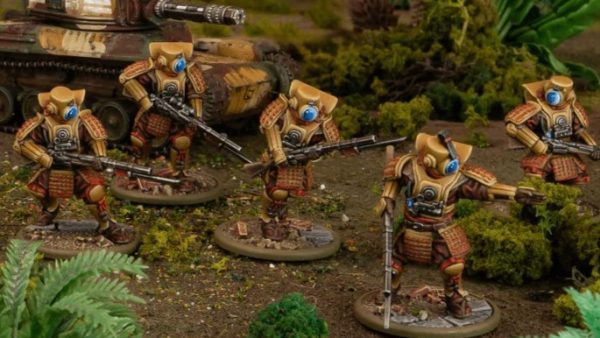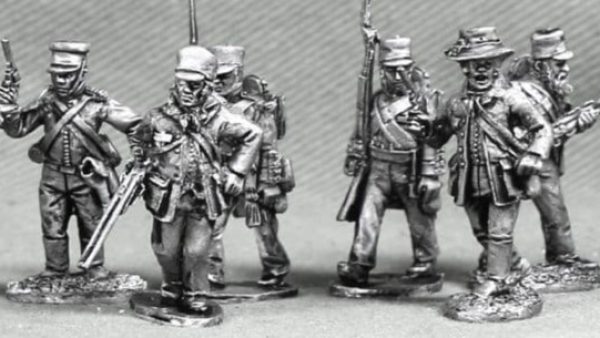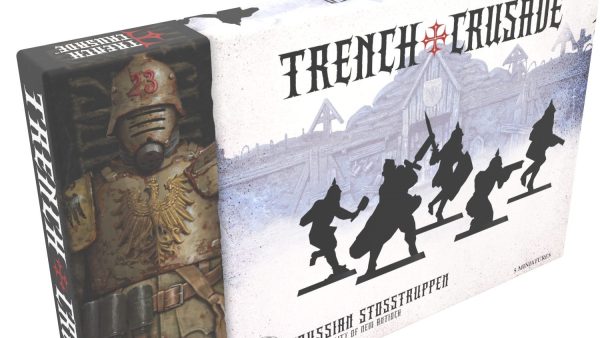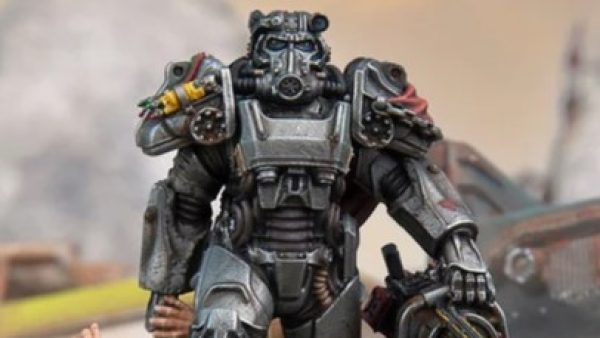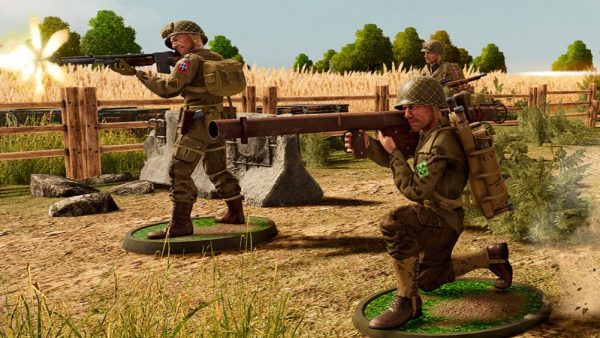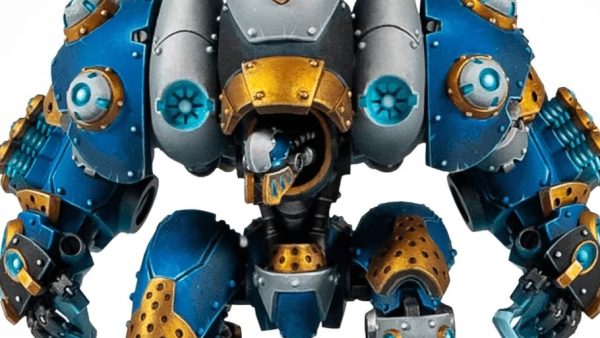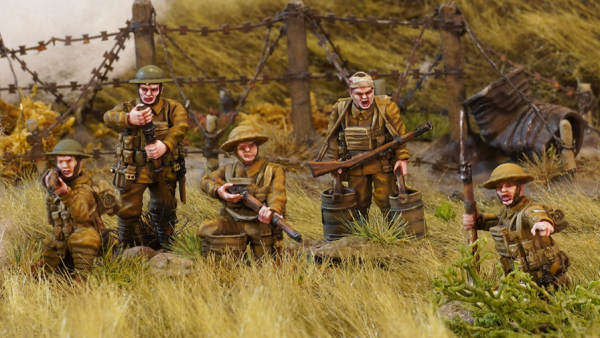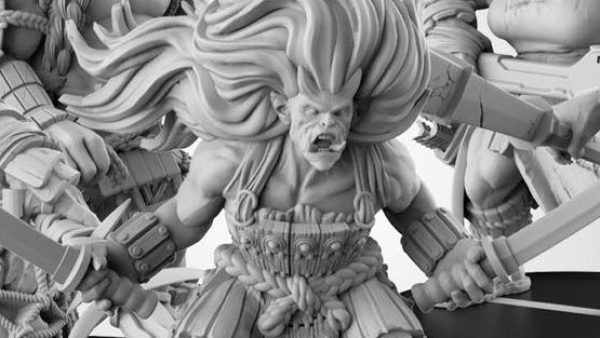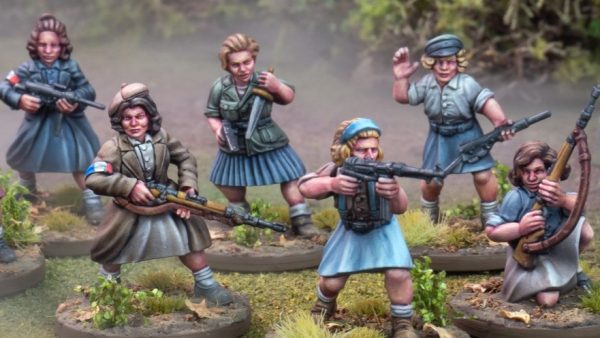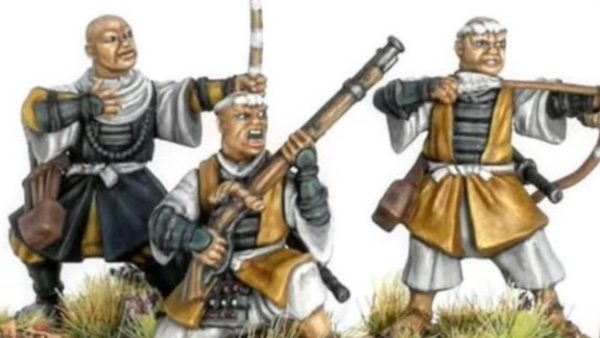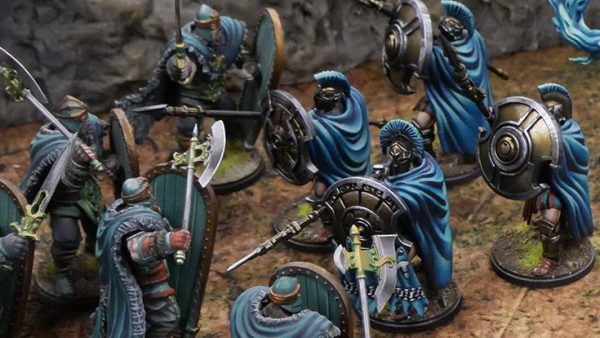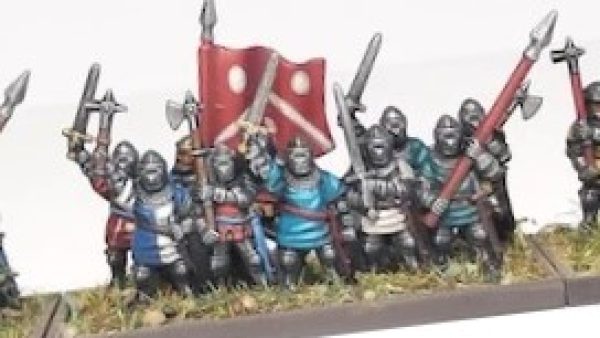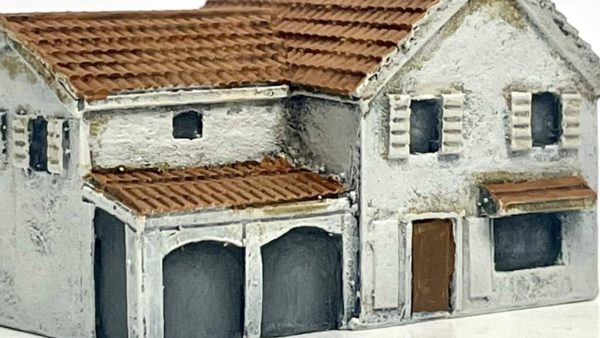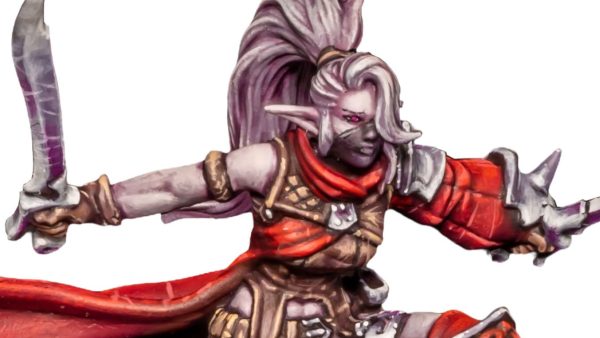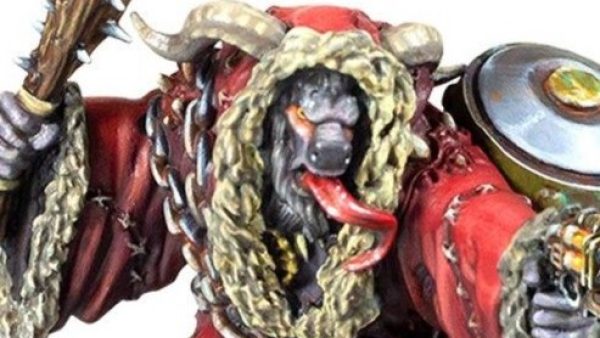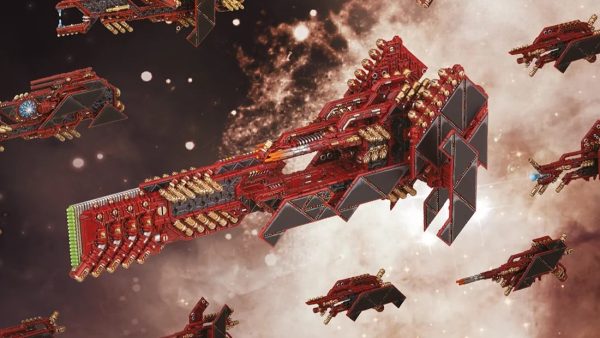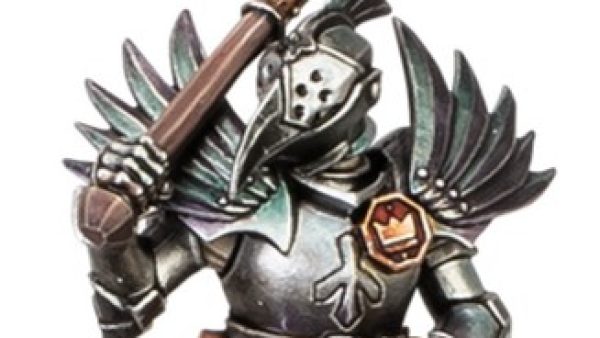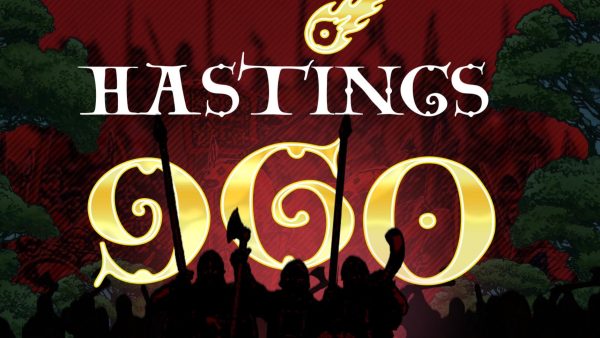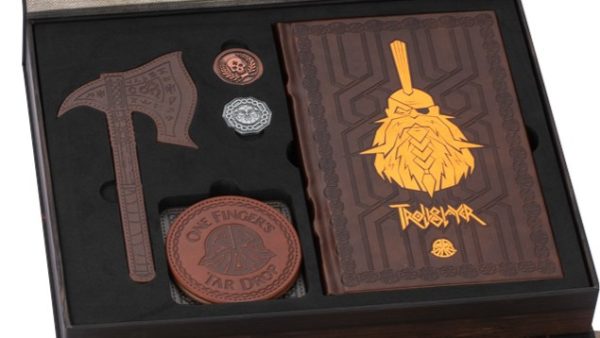Home › Forums › News, Rumours & General Discussion › Is it time for some more critical analysis of rule sets
- This topic has 64 replies, 25 voices, and was last updated 6 years, 4 months ago by
phaidknott.
-
AuthorPosts
-
August 4, 2019 at 11:33 am #1421620
I think it’s not so much the overlap, but the better marketing of the Korea supplement with the added bonus of a Bolt-action community that has a functional eco-system.
SPQR would have to piggyback of the Hail Caesar range, but that has two problems :– Hail Caesar is not aimed at beginners, SPQR appears a bit more beginner friendly
– only minimal support
Also keep in mind that Warlord is obviously going to focus its primary marketing activities on the products that sell, because that is the most effective use of their resource. It kind of sucks for SPQR, because it really needs a bit more love to get that ball rolling.
August 4, 2019 at 11:42 am #1421622What worries me, with lack of accuracy in a historical subject, isn’t just that it informs the wrong decision making process in game design, is that it also incorrectly presents a historical subject to those buying it.
For me, a historical topic comes with a duty of care to its history. Presenting incorrect history as fact, covered with the caveat ‘it’s just a game’, is something I personally cant stand. I come from a viewpoint of one having studied and taught history for a time, and perhaps take the need to present it as accurately as possible a little more seriously than is needed. Perhaps it isn’t needed, perhaps it doesnt matter, but when it’s wrong, and then presented as fact, we are altering historical fact.
That to me never seems a good way to go about things.
It’s also worrying as the material and research is available for most things. These days it’s far harder to plead ignorance on a historical topic due to lack of sources than it once was.
The whole ranting online in forums at North Korean figures with SKS carbines is an example where a little research is a dangerous thing.
History is an actual event. If it’s a war, then people lost lives in such events. Therefore some degree of respect should be afforded to its presentation. But that’s only my personal mantra, and once the history is treated with respect, I’m still playing toy soldiers.
August 4, 2019 at 4:28 pm #1421718@piers – we don’t always agree, but this comment above is why OTT needs to invent a +100 button on the comments.
How careful or careless a historical rules set is, or how careful or careless it has to be, I’m sure is a sliding scale with different people having different ideas on the “correct” setting.
But historical games that are flat-out wrong aren’t only careless. They’re irresponsible. Insulting. Dangerous. Disrespectful.
People don’t have to play, design, or market historical. There are other genres out there that are awesome. But if one does want to do historical, like it or not, one assumes at least a small degree of responsibility to at least make an effort it in doing it right.
August 4, 2019 at 4:38 pm #1421720@elessar2590 – regarding Darkstar – you may be more right that you know. From 2012-2016 we played that game with a different set of rules, different warship record sheets, etc. It grew to the point where it was unplayable (300-400 points light cruiser battles were taking 6+ hours). In 2017 I resigned myself to break out the designer’s scalpel and start cutting. It took a year before I finally started, I was terrified of cutting out any one the complexities. Trust me, the system people play now is the GREATLY slimmed down, simplified, fast-play format. Gives you an idea of how it used to be. But as a designer it comes down to … it still has to be a game that people actually want to play.
To kind of bring this thread back on topic, I sat down my players at the time, @gladesrunner, @aras , Jeff Porro, others … and straight out demanded: HURT MY FEELINGS NOW. 😀 What parts of this game do you honestly NOT like? When in the turn sequence are you looking at your iPhone? When I say there’s a game on Saturday and you decide sometimes you DON’T want to come, please tell me WHY.
We took a “critical analysis of the rule set” as the thread suggests.
Those parts of the turn sequence that the players found tedious or frustrating or confusing, I pulled out, re-worked, and slipped back in. And those we have what is actually Darkstar 2.0 today.
The old game would still be collecting dust in the closet now if we HADN’T taken that critical review.
August 4, 2019 at 5:05 pm #1421730Mmm!!! food for thought here. ?
I completely agree that genuine reviews are very hard to find, but then again it will be. Let’s face it I could review something and slate it and you could review the same thing and think it’s the best thing since sliced bread.
I completely agree that again errors in the rules and lack of proof reading let alone play testing seems to be very common with most companies these days and GW are also masters at this as well as Warlord Games.
I do think though BoW / OTT could do more in there review, likewise the so called independent magazines and don’t get me started on YouTubers. I find YouTube channels to be the worse as they quite often get given a product to review and 99% of them blow smoke up the companies backside and never give a poor or honest review.
The hobby at the moment is saturated with so many products being released and not giving the consumer a chance to breath, let alone enjoy the products they’ve recently bought.
As for a historical channel like BoW / OTT, I think as like @piers @oriskany @torros and myself are long in the tooth wargamers who are dinosaurs and we find the modern approach to game designs to be strange. But, Rapid Fire & Battlegroup might not be everyone’s cup of tea or In the Grand Manner Napoleonic rules also may not appeal to the newer gamer, but I enjoy playing these as well as Flames of War, Sharps Practice, Pickets Charge and many many others.
Most historical games designed today are done with a Hollywood approach, they give a small flavour but lack depth as this does not suits the time frames that most games are set to be played in. Like I said you couldn’t play a grand manner Napoleonic game in an hour and half, you’d be doing good if you finished it a day let alone 2 days. So @oriskany is right that it’s a sliding scale for game design. But after all said and done a glossy full colour book will sell more than an A5 black and white pamphlet. ??
August 4, 2019 at 5:27 pm #1421732I think this blog post by Joe McCullough (writer of Frostgrave is very insightful).
https://therenaissancetroll.blogspot.com/2018/02/is-wargaming-getting-too-easy.html
Now Joe did write a set of rules with no “official range” of minis at the start (although NorthStar did end up making some excellent minis for it). But perhaps we are too used to just buying everything in a “convenient” package with rules, minis, terrain all in one easy package. So any reviews are about that package as a whole (rather than focusing on just the rules themselves). Now 20-30 years ago things were a bit different in that you would buy the rules, THEN select the minis you liked (and scale), so rules had to cover all scales of minis from 6mm up to 28mm. But these days the package dictates the scale of the minis you’ll be using and the rules reflect that (or they aren’t as open source as they used to be). Most rules were sold by companies that didn’t produce minis, so they were sold purely on the strength of the ruleset themselves.
But now everything is in a starter set, can you review this package based on just the rules themselves (as people are also buying the minis at the same time). I would agree that most reviews do tend to stick with the minis side of things (as it’s not as time intensive to prep for a video compared to actually playing the rules (usually the reviewer has just the amount of time for a quick flip through of the rules to get the gist of the thing).
I do think that most rule systems that are sold separately from a miniatures manufacturer tend to be stronger (because they have to be, as the focus is purely on the ruleset), whereas the rules in a starter set from a mini manufacturer tend to be a lot weaker (as the focus is about the package as a whole. However games the Beyond the Gates of Antares stand out as a very good set of rules (indeed some Bolt Action players are trying to convert the rules over to playing WW2 games), so it’s not fair to give a blanket statement on things as a whole.
But the Let’s Play videos for Chain of command with Rich do focus on the rules, because that’s what they sell. The videos for games like SPQR tend to be about the minis s much as the rules because they are selling the whole package.
So perhaps we need to see reviews/let’s play videos from rules manufacturers (rather than these package affairs) as the review is going to be purely focused on the ruleset (and so can be more indepth)?
I imagine Gerry could do a fantastic review of Saga after playing many games, and as the system is sold purely as a set of rules would be extremely informative to anyone considering doing Dark Age Skirmish (although skirmish/warband historical games aren’t my thing as they are at their core 1 figure equals 1 man and the differences due to the era being reflected can’t be established in the rules for any skirmish level games).
August 4, 2019 at 7:23 pm #1421805I’d argue that (good) starter sets are essential for a game to get a community started.
One has to consider the simple fact that wargames are competing for time (and money) with hobbies that have a more immediate return on investment (videogames are literally plug & play).
Nothing is more annoying than having to buy ‘more stuff’ with no clue as to what makes for a functional & fun army in a system you’re not familliar with.
Never mind the added complications of not even knowing what this wargame thing is like at all.A starter set solves all of this.
The best starter sets introduce the rules in a manner that allows one to get a feel for the game without having to waste precious time reading dry text just to play the most basic battle.
That doesn’t mean the rules can’t be sold separately .
//
One has to keep in mind that not everyone entering this hobby is interested in the fluff.
Some of us just want to play a game.
Whether the accuracy is ‘Hollywood movie’ or ‘battlefield simulation’ doesn’t matter, provided the game doesn’t try to sell itself as something it isn’t. That avoids needlessly negative reviews by people who want a ‘realistic’ game (or bashing a game for being ‘too complex’ when they want a beer&pretzel game).August 4, 2019 at 7:50 pm #1421814Well that’s the point Joe was making, we are just used to this convenience of buying in one go (perhaps to the point where we automatically don’t look at other options as they are just “too much hard work”). It’s prevalent in most aspects of life (not just wargaming), but is this option always the best option (and do we even get to see what the other options are, as marketing drives what we see more than anything).
One of my favourite set of rules is the Postcard rules for Ancients by Irregular armies, it’s printed on six pieces of coloured cards with the rules/charts on one side and examples on the other. You just advance through the phases by putting the card you just used at the back of the stack, and move onto the next (so not all rules have to be 200 page tomes).
“Never mind the added complications of not even knowing what this wargame thing is like at all.”, and that’s the crux issue. We don’t get to see very often what this wargame thing is about before we buy. Most of the time the urge to buy a starter set is driven by the minis (the rules are almost secondary). But the reviews we see on-line are usually all about the minis, and not a lot about the rules themselves (hence the OP). Perhaps reviews need to place equal focus (if not more) on the rules themselves rather than the minis. Too often I have bought systems/starter sets, and ended up with a load of minis but a rule set which is barely serviceable. Rules back in the card bound black and white A5 Tabletop Games era where £6 a pop, and gamers would take a punt on them as they were cheap and if they didn’t work you just moved on to the next one. But these starter sets often range from £30 to £100 a pop (so gamers are more invested in their purchases and tend to self justify their purchases). Starter sets are fine, but before the advent of the “big box” starter sets most mini companies offered starter sets for different rulesets anyway (and perhaps sold the rules anyway. The difference is the rules development moved “inhouse” over the last 20 years or so, and as many have said for miniature companies, the rules aren’t their main focus.
I’d argue that for historical gaming, doing the research is all important for you to really enjoy the game. Researching the uniforms, equipment, organisation and battles of the day is the “fluff” of historical gaming and is just as inspiring for gamers to collect armies and any GW fluff for 40K (but you can buy many books from many publishers rather than the “convenience” of the one stop shop at GW. “Hollywood Movie” or “cinematic” aare terms that have crept into rules lately to describe unrealistic things happening on the table top, sometimes due to the brevity of the rules themselves (or by design), and it’s a term I’m not fond of hearing (again we see it used a lot in skirmish level wargaming). “Realistic rules” can be just as evocative (eg suppression rules, you don’t see that very often these days as it’s “too complicated” or spoils the fun as your units don’t do what you want.
“Good” rules are different things to different people, but perhaps the issue is we usually only get to hear about one design philosophy these days (simple/quick/hook mechanic) rather than the whole spectrum of what rules can do and how we as gamers can explore different ways of gaming. These days nearly everything released is skirmish level gaming (partly driven by the dominance of 28mm), but the idea of other kinds of miniature wargaming (such as rank and file) don’t often get the coverage to the same extent.
August 4, 2019 at 8:46 pm #1421832Who’s playing Cruel Seas? I am, and my friend. Also something Warlord should be commended for is that their reprint of the rules incorporated all of the errata. That was pretty nifty work and not something I have seen many wargaming companies do.
August 4, 2019 at 8:49 pm #1421833@phaidknott I’m not disagreeing with the need for better reviews, which should include the rules in any review.
I think most people quickly learn that spending money on big shiny things with shitty rules isn’t going to offer them long term fun anyway. However with the help of unboxings and a couple of good ‘let’s play’ videos that can be prevented. It doesn’t mean you won’t make mistakes and buy into games that are flawed, but you’d definitely have a better chance of buying a good game. Such things also depend on finding a reviewer who shares your priorities …However to beginners a review of the rules in detail is meaningless as they do not understand what certain things mean within the context of the game/hobby.
Is ‘I go / You go’ bad by default or are there tricks that designers can use to make it ‘better’ ?
Why is ‘overwatch’ a thing at all ?
What the heck is an ‘alpha strike’ and why should I worry if a game allows such things to happen on turn 1 ?
All this means that reviews either need to explain things or they need to be accompanied with articles that explain wargaming as a hobby. I’d say that the historical articles by @oriskany have done a good job at that latter aspect. I hope to see similar in-depth analysis of fictional conflicts. Imagine an article about the Horus heresy with info about the games needed to replay events written by an alt-universe @oriskany who likes fictional settings … 😀
I definitely agree that good rules can include ‘advanced’ concepts (like the effect of suprressing fire) without complex mechanics. To me that’s just good design. However the games also need to explain why and how this sort of thing is included.
And ideally allow the introduction of such concepts in small steps.I don’t need to read or understand the fluff for 40k to enjoy the game, but I can approach it like that if I want to.
So why should historical games be any different from a pure game mechanic point of view ?
I know it sucks for designers to hear that gamers ignore the fluff they’ve spent months/decades of research on … but because that research is part of the rules/stats it’s not wasted.If the rules are designed with realistic tactics in mind then I should start to develop tactics that mimmick ‘real world’ tactics automagically.
However … I need to be aware that such tactics are needed or else I’m going to claim the game is unbalanced (or unit X with weapon Y is ‘overpowered’) as my tank-only army is ripped to pieces while trying to win in urban terrain. That sadly is something that happens a bit too often. It’s as if people forget the need to dictate the battle with your own unit strengths in mind as opposed to wondering why snipers are useless in melee combat … (or claiming that it’s unfair that a sniper shot your officer who was prancing about in the open … )
In an ideal world I’d also have fictional rulesets that allow me to develop tactics that make sense within that setting and that will match what happens in the fluff (ie : a handful of spacemarines wiping out a horde of xenos scum).
In an ideal world we’d also have reviews that dare to dive deeper.
August 4, 2019 at 9:02 pm #1421834I’d argue that for historical gaming, doing the research is all important for you to really enjoy the game. Researching the uniforms, equipment, organisation and battles of the day is the “fluff” of historical gaming
Sadly I think that’s part of the historical hobby that’s falling to one side to a degree. Many people don’t have a deep interest in history, nor the time or inclination to delve too deeply into it. I would have expected those who play historical games.to have some interest or connection to the period they choose to game. For me historical wargaming has always been an extension of an interest in military history. Perhaps that’s why it’s hard for me to divorce the two from each other. I expect to buy books and research any periodic play. Hence the bloody small library at home…
Being ‘historically accurate’ has become something of a dirty word, and something to be almost ridiculed by some in certain quarters of the internet.
Part of the attraction of historicals is not having to be constrained by a starter set… perhaps it’s a generational thing, but the whole attraction was looking for what to use, finding options and matching them to what you wanted. I like having to use multiple companies for an army… I see it as a bonus not a hindrance. It can lead to interesting discoveries.
Realistic rules that reflect the period can be fun and fast. This myth that realistic rules are by default complicated and boring is just that. You can make rules to be ‘Hollywood’ in style, that’s fine, but it doesnt mean that realistic rules are by default more complex and boring. But you always have to accept that wargaming as a hobby is a broad church, but each person has a very individual take on how they express that hobby. What’s right for one isn’t right for another… and that’s likely why, especially in historicals, we have such a wide array of products.
August 4, 2019 at 10:59 pm #1421842@piers I definitely agree that ‘realistic’ is definitely something that can (and should be) fun.
I suspect that a lot of the idea that ‘realistic’ = ‘complex’ is the result of a few (bad) designers focussing so much on ‘realism’ that they forget that it should be playable (and logical) as well.
I’m again drawing parallels to videogames, because at an abstract level the problems are similar.
Best example are these ‘survival’ games. These games take the idea that ‘hunger’ and ‘stamina’ ought to be simulated in order to get a ‘realistic’ survival situation. However bad design choices result in the game becoming more like babysitting a virtual avatar, which makes the game boring as you’re too focused on keeping the meters at an optimum level instead of *eh* playing a survival simulation.I wouldn’t mind if games had to switch to apps to get more simulation aspects into a game.
If the industry wasn’t as obsessed with describing scale in a format that is abso-flocking-lutely useless in order to create an artificial eco-system then sourcing models from various manufacturers wouldn’t even be an issue. Seriously.
Why is ’28 mm’ from company A a giantic fat tub o lard and the same ’28 mm’ soldier from a competing company looks like an anorexia patient. I can understand that technology limitations mean that certain aspects of a figure have to be larger than life (gun barrels and swords) in order to make them more durable, but everything else ? *aarrrrgh*
I wish ’28 mm’ would be replaced by 1:56 or even 1:48
And don’t even get me started on the ‘xx mm Heroic’ variants … what the heck is that ?August 5, 2019 at 12:23 pm #1422028Maybe we all need to remember that the videos we are talking about are unboxings. A quick look at what is actually in the box. They are not intended as in depth reviews. That being said, I would be really interested in a sister series, “Whats in the book”. A quick review of the rules after one read through and perhaps a chat, passing along first impressions, an idea of who the game is for, what their impressions of the authors intent is, and how they think it will play. You could revisit with an “Out of the Book” video later on with a short review after a game or two if there’s been time and interest. I understand that learning to play and finding the time for this is not practical for the billion games that come out. All such chats should include pros and cons for every game, and try to express an open mind, perhaps unless a game really is that bad/good (Warspanner 15th ed, had my healthy dog put down, and ran away with my wife after drinking all my good booze!).
I also do not find the Playthroughs to be the final answer in giving a feeling for how a game plays. Once you’re done filming those videos it might be good if the player sat down with the camera and give his feelings and opinions, possibly after a day or two to think about it, and after the company rep has left the studio.
August 5, 2019 at 5:06 pm #1422073Take a guess as to why I’ve cancelled my pledge to CMoN’ s current Kickstarter ‘Trudvang’. Concept/setting is great, models are so-so but the gameplay mechanics… no thanks!
@lawnor – that’s what I like about Rahdo’s reviews of board games, his Final thoughts videos do precisely that.
August 5, 2019 at 5:09 pm #1422074There is very little interest in YT channels doing anything at all negative regarding gaming.
They survive and thrive on a positive relationship with games companies.
You do now see a few successful YT channels emerging that are pulling back the curtain to reveal the rotten practices of the big video games companies. Sweat-shop conditions, releases at full cost that are little better than beta tests, loot boxes aimed at kids etc.
Given the amount of money sloshing around the board games market these days it is probably overdue for someone to pull back the curtain on the horrible environmental cost of the plastic mountains we are buying. Add to that money spent on glossy KS hype rather than proper playtesting of the rules.
You really just have to accept the boardgame media for what it is.
-
AuthorPosts
You must be logged in to reply to this topic.










































